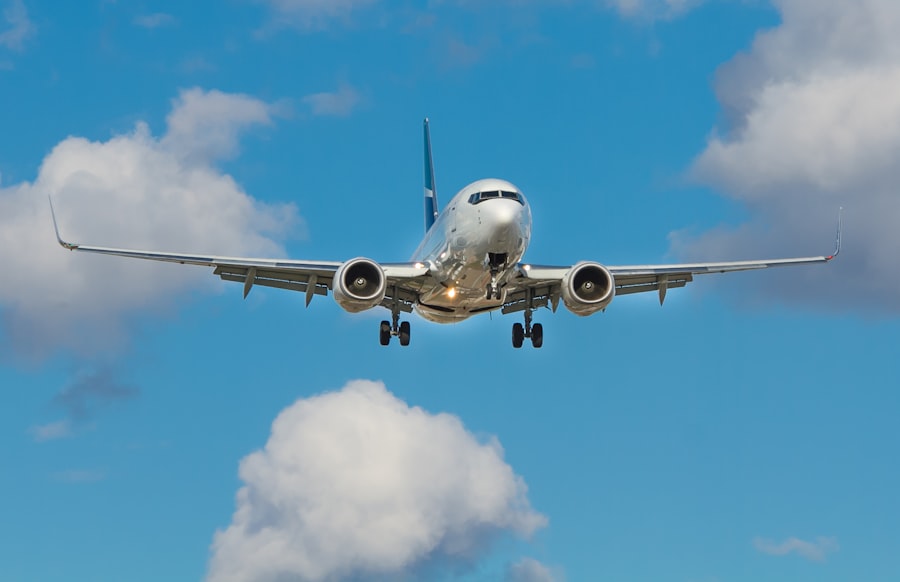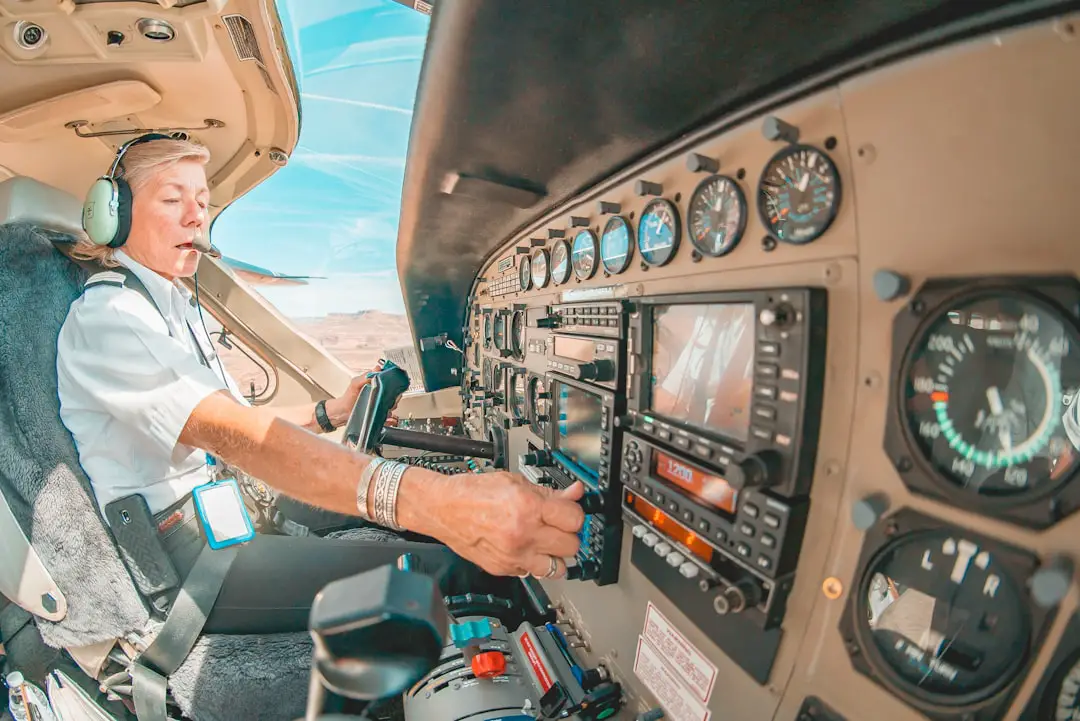The advent of the internet has revolutionized numerous industries, and aviation is no exception. Virtual airlines have emerged as a significant phenomenon within the realm of online flight simulation, allowing enthusiasts to engage in a more structured and realistic flying experience. These organizations simulate the operations of real-world airlines, providing a platform for flight simulation enthusiasts to connect, share experiences, and enhance their skills.
The rise of virtual airlines can be attributed to several factors, including advancements in flight simulation technology, the growing popularity of online multiplayer platforms, and the desire for a more immersive experience among aviation aficionados. As flight simulation software has evolved, so too have the opportunities for virtual airlines to flourish. Programs like Microsoft Flight Simulator, X-Plane, and Prepar3D have introduced increasingly sophisticated graphics and realistic flight dynamics, making it possible for users to experience flying in a way that closely mirrors real-world aviation.
This realism has attracted a diverse community of users, from casual gamers to serious aviation enthusiasts, all seeking to replicate the thrill of piloting an aircraft. Virtual airlines have capitalized on this trend by offering structured environments where members can participate in scheduled flights, engage in air traffic control operations, and even manage airline logistics, thereby creating a comprehensive aviation experience.
Key Takeaways
- Virtual airlines have seen a significant rise in popularity within the online aviation community.
- Virtual airlines strive to replicate real-world aviation operations, including flight schedules, routes, and aircraft types.
- Joining a virtual airline can provide flight simulation enthusiasts with a sense of belonging, skill development, and networking opportunities.
- Virtual airlines play a key role in fostering community and collaboration among aviation enthusiasts through group flights and events.
- There is a diverse range of virtual airlines, each offering unique experiences and opportunities for members.
How Virtual Airlines Replicate Real-World Aviation Operations
Virtual airlines strive to mirror the complexities of real-world aviation operations, encompassing everything from flight scheduling to passenger management. Members typically assume roles that reflect those found in actual airlines, such as pilots, co-pilots, air traffic controllers, and ground crew. This structure not only enhances the realism of the experience but also fosters a sense of responsibility and teamwork among participants.
For instance, pilots are often required to adhere to specific flight schedules, file flight plans, and maintain accurate logs of their flying hours, much like their real-world counterparts. In addition to operational roles, virtual airlines often implement systems that replicate real-world airline management practices. This includes route planning based on real-world data, fleet management that reflects actual aircraft types and performance characteristics, and even financial management that simulates the economic challenges faced by airlines.
Some virtual airlines utilize advanced software tools to track flights, manage schedules, and analyze performance metrics. This level of detail not only enhances the authenticity of the experience but also provides members with valuable insights into the intricacies of airline operations.
Benefits of Joining a Virtual Airline for Flight Simulation Enthusiasts

Joining a virtual airline offers numerous benefits for flight simulation enthusiasts, particularly those seeking a more structured and engaging experience. One of the primary advantages is the opportunity for skill development. Members can improve their flying abilities through regular practice and by receiving feedback from more experienced pilots.
Many virtual airlines offer training programs that cover various aspects of aviation, including navigation techniques, communication protocols, and aircraft systems knowledge. This structured learning environment can significantly enhance a member’s proficiency and confidence in flight simulation. Moreover, being part of a virtual airline fosters camaraderie among members who share a common passion for aviation.
This sense of community can be incredibly rewarding, as it allows individuals to connect with like-minded enthusiasts from around the globe. Virtual airlines often organize group flights, events, and competitions that encourage collaboration and teamwork. These activities not only make flying more enjoyable but also provide opportunities for members to learn from one another and share their experiences.
The friendships formed within these communities can extend beyond the virtual realm, leading to real-world connections among aviation enthusiasts.
The Role of Virtual Airlines in Fostering Community and Collaboration
| Virtual Airline | Community Size | Collaboration Initiatives |
|---|---|---|
| Airline A | 500 members | Regular group flights, Discord events |
| Airline B | 300 members | Virtual pilot training, charity events |
| Airline C | 700 members | Virtual airshows, community forums |
Virtual airlines play a crucial role in fostering a sense of community among flight simulation enthusiasts. By providing a platform for individuals to come together and share their passion for aviation, these organizations create an environment where collaboration thrives. Members often engage in discussions about flight techniques, share tips on improving their skills, and exchange information about the latest developments in flight simulation technology.
This collaborative spirit not only enhances individual learning but also contributes to the overall growth of the community. Additionally, virtual airlines frequently host events that encourage participation and teamwork. These events can range from group flights to competitive challenges that test members’ skills in various scenarios.
For example, some virtual airlines organize fly-ins where members gather at a specific airport to simulate a busy air traffic environment. Such events require coordination and communication among participants, mirroring the collaborative nature of real-world aviation operations. Through these shared experiences, members develop strong bonds and create lasting friendships that extend beyond their virtual interactions.
Exploring the Diversity of Virtual Airlines and Their Unique Offerings
The landscape of virtual airlines is incredibly diverse, with each organization offering unique features and experiences tailored to different interests within the aviation community. Some virtual airlines focus on specific regions or types of aircraft, while others may emphasize particular operational philosophies or flying styles. For instance, there are virtual airlines dedicated solely to cargo operations, allowing members to explore the intricacies of freight transport while honing their skills in managing logistics and cargo handling.
Moreover, many virtual airlines incorporate elements of realism that cater to various levels of expertise. Some organizations may prioritize strict adherence to real-world procedures and regulations, while others adopt a more relaxed approach that allows for creative freedom in flight operations. This diversity enables individuals to find a virtual airline that aligns with their personal interests and goals within the realm of flight simulation.
Whether one is drawn to commercial passenger operations or military aviation scenarios, there is likely a virtual airline that caters to those specific passions.
The Technology Behind Virtual Airlines and Flight Simulation

The technology underpinning virtual airlines is continually evolving, driven by advancements in both flight simulation software and online connectivity. Modern flight simulators offer highly detailed environments with realistic weather systems, dynamic air traffic control interactions, and intricate aircraft systems modeling. These features enhance the immersive experience for users and allow virtual airlines to create authentic operational scenarios that closely resemble real-world aviation.
Furthermore, many virtual airlines leverage online platforms to facilitate communication and coordination among members. Tools such as voice communication software (e.g., TeamSpeak or Discord) enable pilots to communicate with one another during flights, simulating real-world cockpit interactions. Additionally, some virtual airlines utilize custom-built software or third-party applications to manage flight schedules, track member activity, and analyze performance metrics.
This technological infrastructure not only streamlines operations but also enhances the overall experience for participants by providing them with valuable insights into their flying habits.
The Training and Certification Programs Offered by Virtual Airlines
Training and certification programs are integral components of many virtual airlines, designed to equip members with the knowledge and skills necessary for successful flight operations. These programs often include structured curricula that cover various aspects of aviation theory and practical flying techniques. For example, aspiring pilots may undergo training on specific aircraft types or learn about navigation procedures essential for safe flying.
Certification processes typically involve assessments that evaluate a member’s understanding of key concepts and their ability to apply them in simulated scenarios. Successful completion of these programs not only boosts an individual’s confidence but also enhances their credibility within the virtual airline community. Many virtual airlines offer tiered certification levels that allow members to progress through increasingly complex training modules as they gain experience and expertise.
Virtual Airlines and Their Impact on Real-World Aviation Training
The influence of virtual airlines extends beyond the realm of online flight simulation; they also play a significant role in shaping real-world aviation training practices. Many aspiring pilots use virtual airline experiences as supplementary training tools that enhance their understanding of aviation principles before entering formal flight schools. The structured environment provided by virtual airlines allows individuals to practice essential skills such as navigation, communication with air traffic control, and adherence to standard operating procedures.
Moreover, some flight schools recognize the value of virtual airline participation as part of their training programs. By encouraging students to engage with virtual airlines, instructors can provide additional resources for skill development outside traditional classroom settings. This integration of virtual experiences into real-world training can lead to more well-rounded pilots who are better prepared for the challenges they will face in actual flight operations.
The Future of Virtual Airlines and Their Potential for Growth
As technology continues to advance at an unprecedented pace, the future of virtual airlines appears promising.
The increasing realism offered by flight simulation software is likely to attract even more enthusiasts into the fold, expanding the community further. Additionally, as online connectivity improves globally, more individuals will have access to high-quality flight simulation experiences regardless of their geographical location.Furthermore, emerging technologies such as virtual reality (VR) and augmented reality (AR) hold significant potential for enhancing the immersive experience offered by virtual airlines. These technologies could allow users to interact with their environments in entirely new ways, creating opportunities for innovative training methods and collaborative experiences within virtual airline communities. As these advancements unfold, virtual airlines will likely adapt and evolve to incorporate new tools that enhance member engagement and operational realism.
Challenges and Considerations for Those Interested in Joining a Virtual Airline
While joining a virtual airline can be an enriching experience for flight simulation enthusiasts, there are several challenges and considerations that potential members should keep in mind.
Many organizations expect members to adhere to specific schedules or complete regular flights as part of their responsibilities.
For individuals with busy lives or unpredictable schedules, this requirement may pose challenges. Additionally, prospective members should consider the level of realism they desire from their virtual airline experience. Some organizations may have strict rules regarding adherence to real-world procedures or require extensive training before allowing members to fly certain aircraft types.
While this structure can enhance realism, it may not appeal to everyone—particularly those seeking a more casual or flexible flying experience.
Tips for Choosing the Right Virtual Airline for Your Aviation Goals
Selecting the right virtual airline is crucial for maximizing enjoyment and personal growth within the flight simulation community. One important factor to consider is the organization’s focus—whether it emphasizes commercial passenger operations, cargo transport, or specialized flying scenarios like military missions or bush flying adventures. Identifying your interests will help narrow down your options significantly.
Another key consideration is the level of commitment expected from members. Some virtual airlines may require regular participation in scheduled flights or adherence to strict operational protocols, while others may offer more flexibility in terms of participation frequency and procedural requirements. Understanding your own availability and preferences will help you find an organization that aligns with your lifestyle.
Finally, engaging with current members through forums or social media can provide valuable insights into a virtual airline’s culture and community dynamics. This interaction can help you gauge whether an organization is a good fit for your personality and goals within the world of flight simulation. By taking these factors into account when choosing a virtual airline, you can ensure a fulfilling experience that enhances your passion for aviation.
If you are interested in virtual airlines, you may also want to check out this article on the com/best-solar-charger-for-backpacking/’>best solar charger for backpacking.
Just like virtual airlines allow you to experience the thrill of flying without leaving your home, a solar charger can provide you with the convenience of charging your devices while on the go in the great outdoors. Both offer unique experiences that cater to different interests and preferences.
FAQs
What is a virtual airline?
A virtual airline is an online-based airline simulation that allows individuals to experience the operations and management of an airline without the need for real aircraft or physical infrastructure.
How do virtual airlines operate?
Virtual airlines operate through the use of flight simulation software, such as Microsoft Flight Simulator or X-Plane, and online platforms that provide a virtual environment for pilots to fly routes, manage schedules, and interact with other virtual airline members.
What are the benefits of joining a virtual airline?
Joining a virtual airline allows aviation enthusiasts to experience the thrill of flying and managing an airline without the high costs associated with real-world aviation. It also provides a sense of community and camaraderie among like-minded individuals.
Do virtual airlines have real aircraft?
No, virtual airlines do not have real aircraft. Instead, they utilize flight simulation software to replicate the experience of flying and managing an airline.
Are virtual airlines affiliated with real-world airlines?
Some virtual airlines may choose to model their operations after real-world airlines, but they are not officially affiliated with or endorsed by those airlines. Virtual airlines are independent entities created by aviation enthusiasts.
